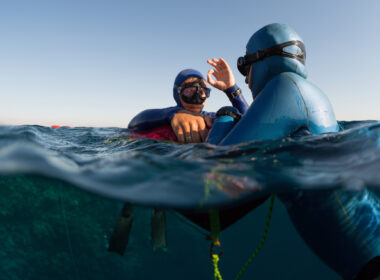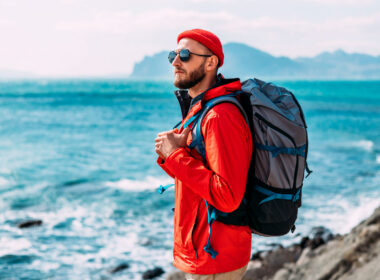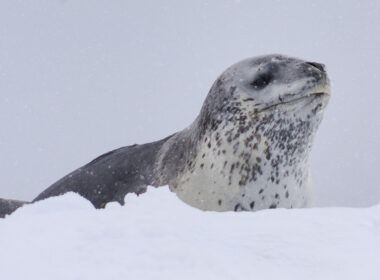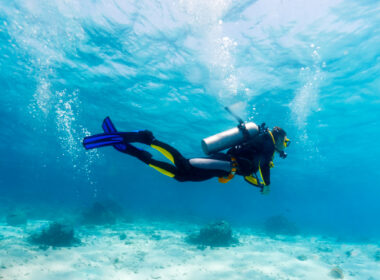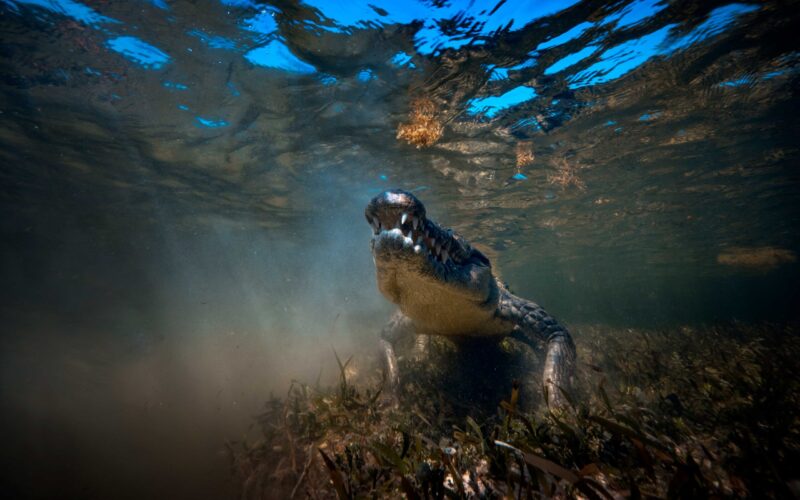Banco Chinchorro is home to some of the most fascinating crocodiles in the world. This remote mangrove island off the coast of Mexico is a haven for these majestic creatures and provides visitors with a unique opportunity to observe them up close. Can you see yourself diving with crocodiles?Whether you choose to snorkel or dive with the crocodiles, this is a once-in-a-lifetime experience that will stay with you forever.
Learn more about the crocodiles of Banco Chinchorro and plan your trip today!
Diving with Crocodiles of Banco Chinchorro
Banco Chinchorro is home to a number of crocodiles, both American and Morelet’s crocodiles. These animals are an important part of the reserve’s biodiversity and have been in the area for centuries. Crocodiles are very powerful and fast predators – they can grow up to 8 meters long and weigh over 1,000 kg. While they usually feed on fish and other small animals, they can occasionally attack larger animals like sea turtles or even humans.
When it comes to behavior, these reptiles are very sociable and enjoy spending time in the sun. During the day they rest in shallow waters while keeping an eye out for food, but at night they become more active. During the mating season the males will engage in aggressive behaviors, trying to win the attention of the females.
Snorkeling or diving with crocodiles at Banco Chinchorro is a unique experience – it allows people to get close enough to observe their behavior and habits in their natural habitat. The only thing to keep in mind is that these animals can be unpredictable and one should always take necessary precautions when venturing near them.
Don’t do that without insurance – Get Covered here!
The Mangrove Habitat
Mangrove forests provide the perfect habitat for diving with crocodiles. These trees grow in areas with low-oxygen soil, allowing fine sediments to accumulate and form the muddy bottom which is perfect for these creatures. The intricate root system of mangroves provides food and shelter for fish and other organisms that make up a large part of the croc’s diet. The mangrove roots also help to stabilize the coastline, reducing erosion from currents, waves, and tides.
In the summertime, crocs will take refuge in the shade of the mangroves, while in winter they can be found basking on the muddy banks at low tide. This cycle of movement between land and water is important for their survival and ensures that they have access to all the resources they need.
Characteristics of the American Crocodiles
American crocodiles are typically grayish-green in color, with a yellowish-white underside. They have the fourth tooth on their lower jaw that is exposed when their mouth is closed, and they have a narrow, tapered snout. Young crocodiles are generally light in color with dark stripes.
American crocodiles are usually between 6 and 11 feet / 2 and 3,5 meters long and can weigh up to 1,000 pounds / 450kg. They live for about 60 years in the wild and up to 80 years in captivity. Crocodiles are carnivorous, eating fish, small mammals, and birds. They have excellent vision and hearing, and are able to detect movement in the water from long distances. They have extremely powerful jaws and can bite with tremendous force.
Crocodiles also have an impressive ability to hold their breath for up to an hour while submerged in water. This is particularly useful when they are hunting prey. Although they do not swim as fast as some other aquatic animals, they are able to move swiftly through the water with short bursts of speed.
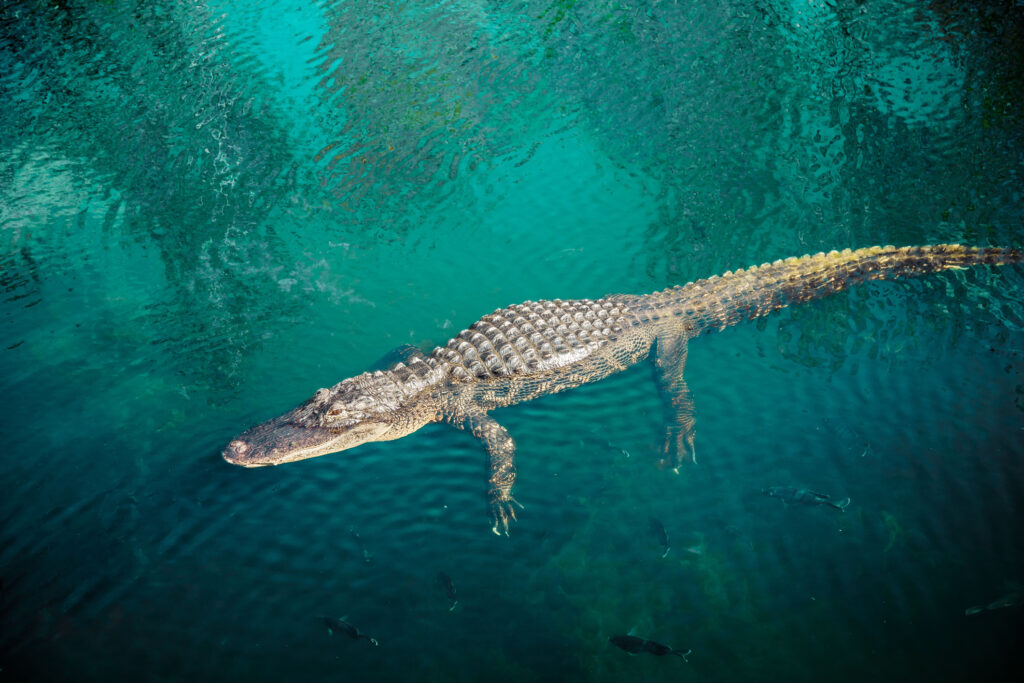
Croc Behavior – What to Know When Diving with Crocodiles.
Crocodiles rely on external sources of heat to regulate their body temperature. They bask in the sun, or move to areas with warmer or cooler air or water temperatures. Crocodiles may quickly enter the water if they are startled by a person, but this should not be misunderstood as aggressive behavior. Crocodiles can also be seen with their mouths open, which is related to regulating their body temperature. Males and females have elaborate courting rituals, and the female will build nests on land above high tide marks. After about 85 days of incubation, the female will dig up the nest and carry her young to the water.
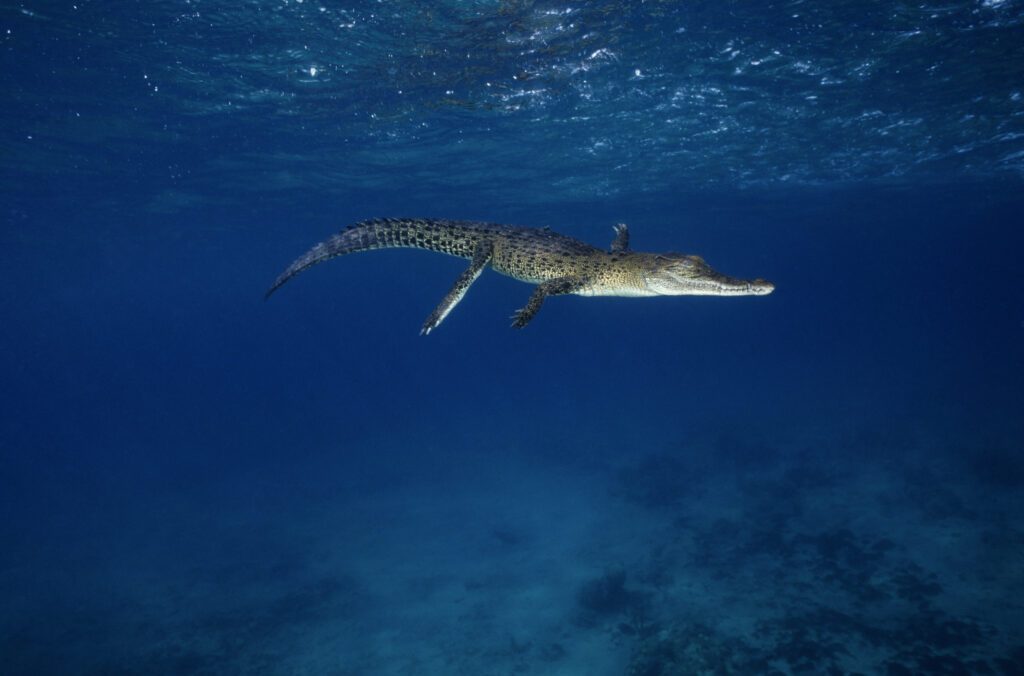
Snorkeling or Diving with Crocodiles
Snorkeling with crocodiles at Banco Chinchorro is an exciting and unique experience. Not only do you get to observe these magnificent creatures in their natural habitat, but you also get to learn about the importance of conservation from the safety guides and experts who accompany you.
It’s important to note that snorkeling with crocodiles is safe and regulated. A “croc handler” (also known as a croc safety guide) is always in the water with you and holds a wooden stick in case any unforeseen actions occur from the crocodile. The crocodiles are not touched by either the humans or the sticks, and it is all about mutual respect and not disturbing them.
Whether you’re a seasoned diver or just starting out, snorkeling with crocodiles at Banco Chinchorro will be an incredible and unforgettable experience. So if you’re looking for something truly unique, add this activity to your travel bucket list!
There aren’t any centers that offer scuba diving with crocodiles, as crocodiles tend to be in the shallower waters of the mangroves, but you may be lucky enough to spot a crocodile during a scuba dive close to that area.
While there’s no guarantee of seeing crocodiles on every trip, chances are you won’t have too much difficulty spotting one while exploring the mangroves of Banco Chinchorro.
Whatever the adventure, whatever the encounter, DiveAssure’s Got You Covered.


